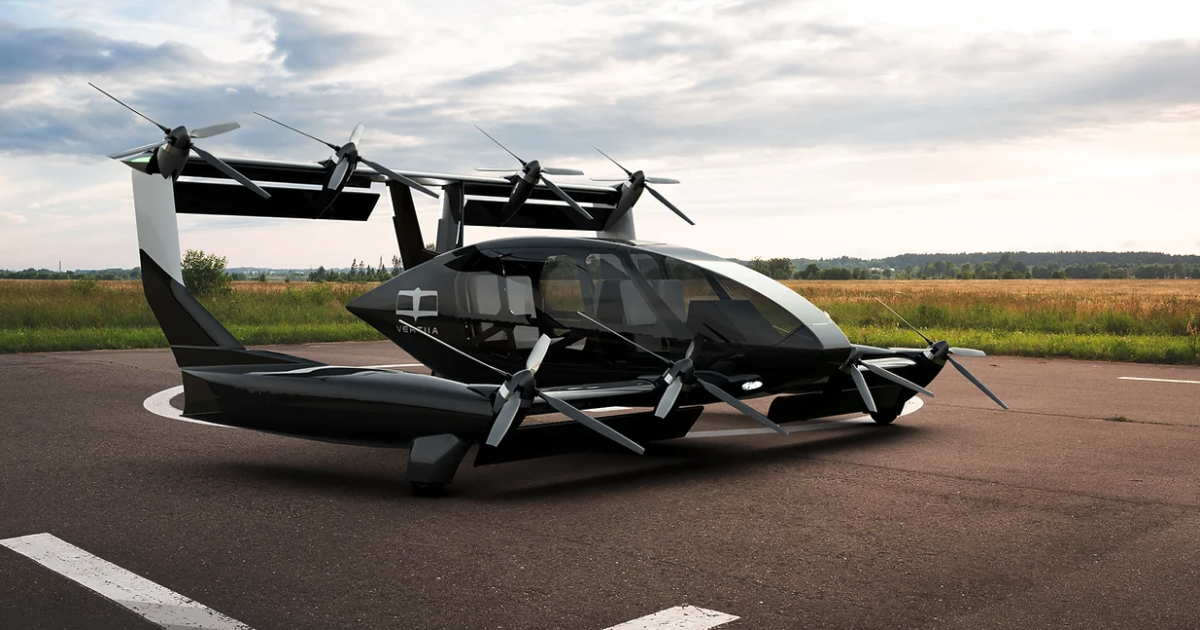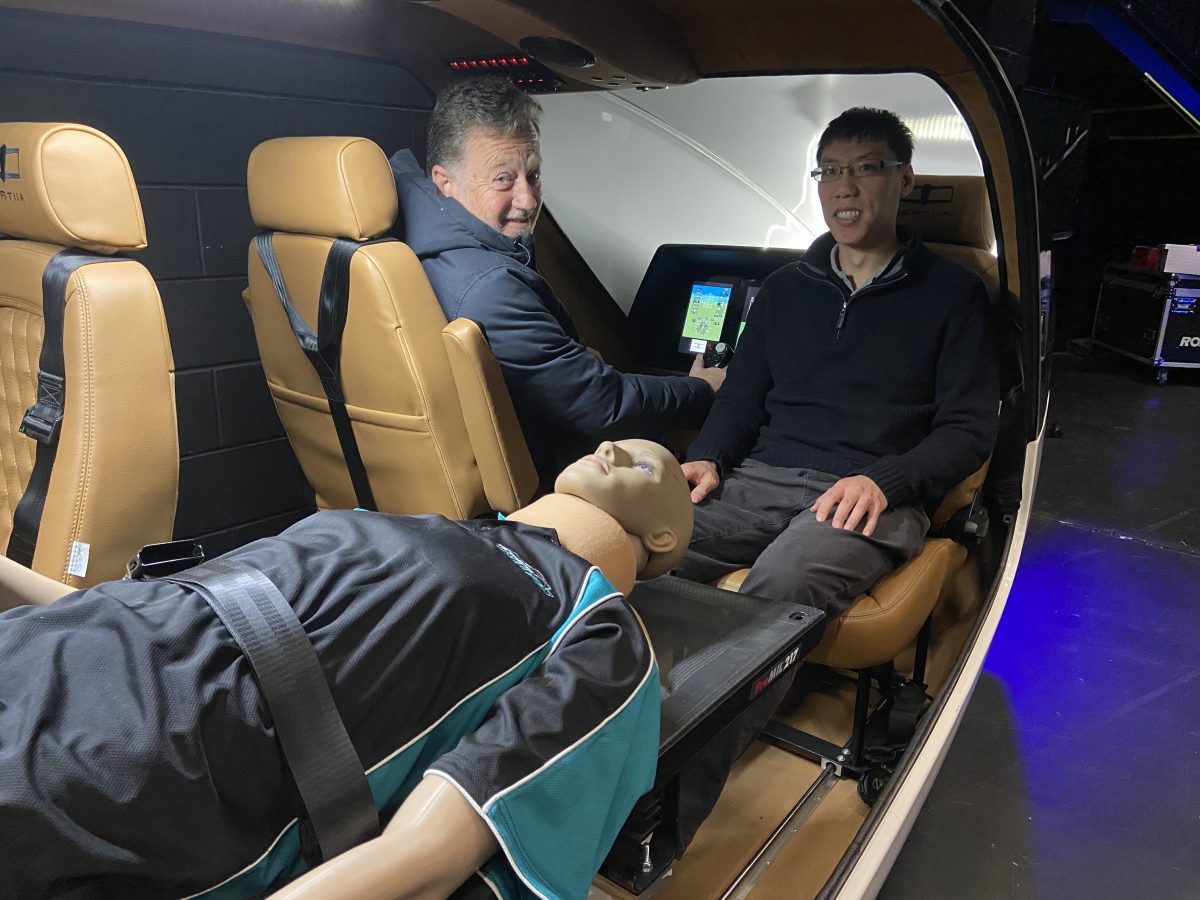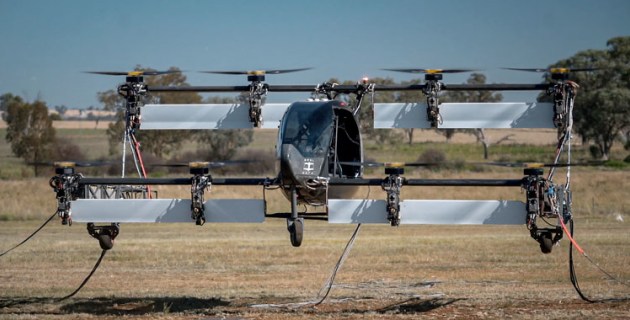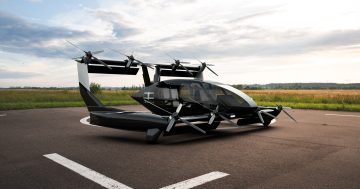
The Vertiia electric vertical takeoff and landing (eVTOL) aircraft. Photo: AMSL Aero.
“I don’t really like to use the term ‘flying cars‘,” said engineer Andrew Gong as he explained the fundamentals of the ‘Vertiia’ electric vertical takeoff and landing (eVTOL) aircraft.
“We’ve come from a more aviation background where we’re taking aircraft knowledge and technology and expertise and applying new things like electrification and hydrogen onto our aircraft.”
Andrew and Russell Hoore have been exhibiting a full-sized cockpit at events across NSW to demonstrate the future of travel.
“This aircraft will get you further, faster and cleaner and at lower cost anywhere around NSW, and in fact, can even get you to Hobart,” Russell said.
“You’ll be able to fly from Sydney to Canberra in about 90 minutes, point to point, and you don’t land at Canberra Airport, you can land on top of a shopping centre or something like that, so you can get directly to your destination.”
AMSL Aero was founded by engineer Andrew Moore and partner Siobhan Lyndon in 2017 and has a base at the Narromine Aerodrome in the NSW Central West.
The Vertiia can carry up to six people and is powered by clean electricity and hydrogen fuel.
Russell said the design was built on an Australian innovation that dated back to 1893.
“It was inspired by Lawrence Hargrave who developed the box kite down at Stanwell Tops, and it’s an incredibly efficient structure,” he said, adding that their design is unique in a field dominated by upscaled drones.
“Our advantage is range. When it comes to our competitors, as you’d know from flying smaller drones, you can’t get really far before your battery gets flat.
“We can run it on hydrogen fuel cells to make it to a range of 1000 kilometres with reserves for weather etc, and still land vertically, which is something nobody else can do.”

AMSL strategy and planning director Russell Hoore and propulsion lead Andrew Gong in the Vertiia cabin. Photo: Chris Roe.
Andrew’s PhD research was on the use of hydrogen propulsion for smaller drones and he’s enjoying the opportunity to incorporate his knowledge into a larger aircraft.
“People have got this kind of perception that hydrogen is unsafe, but the reality is, it’s equal, if not safer than any of the combustible fuels we’ve got today,” he said.
“We’ve actually got hydrogen cars and buses and trains around the world and there are hydrogen buses already driving around NSW on the Central Coast, so the safety is now well established.”
The prototype being exhibited is fitted out for aeromedical use, enhancing another Australian innovation pioneered by John Flynn and his flying doctors in the 1920s.
Russell said the applications for the medical field in Australia were enormous, along with an expansion into long-distance commuting.
“We’re thinking we can have a passenger version which will take a pilot and four passengers and we think the economics will be much more affordable,” he said.
“Vertiia’s door-to-door time from Canberra to Sydney will be around half that of commercial planes due to time avoided travelling to and from airports and waiting at the gate.”

Vertiia’s first hover test in February was a success. Photo: Photo: AMSL Aero.
Vertiia successfully completed its maiden test flight in February and Russell said the team was not far away from Civil Aviation Safety Authority (CASA) certification.
“We are aiming to get certified by CASA in 2026. That doesn’t mean you’ll see them flying around the city in three years’ time, but it means we can start selling them to operators who might start using them in remote locations like the Northern Territory that really need aeromedical help,” he said.
“From there, we hope one day they’ll be all over Australia!”
You can learn more about Vertiia here.













